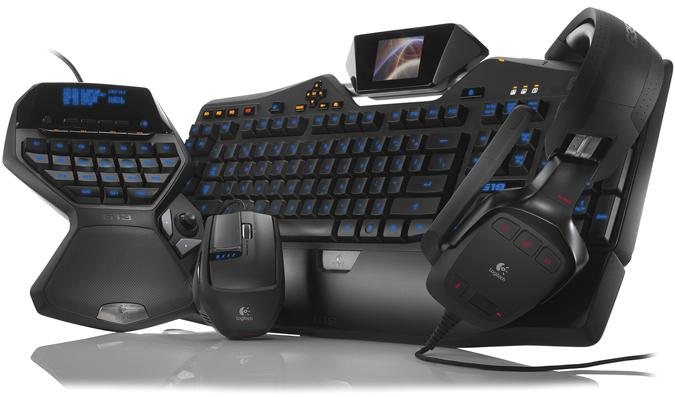Find Part 1 of the two part series The Best Gaming Experience here.
by Ashraf Abdalla
Welcome back geeks & gamers to the second part of my PC gaming rigs special. We’ve got you set up with CPUs, motherboards, and memory in this basic guide for all first time PC gaming rig builders. This month I’ll take you through the rest of your gaming rig’s components, and give you a few pointers about monitors and about peripherals.
The single most important decision you’ll need to make is your graphics card, and where you should put the bulk your budget. You’re really spoilt for choice here as there’s a plethora of cards on the market at all price points. You can pick up a pretty useless card for KD 15-20 that won’t run more recent games, or you can spend an arm and a leg for a card that’s arguably as powerful as some of NASA’s supercomputers. Alternatively you can run dual cards, and potentially double the graphics power of your rig.
The decision between Nvidia and AMD graphics cards is more a matter of personal preference. Both companies make great cards at similar performance levels and priced closely. Nvidia does tend to be a little pricier with a slight performance edge. Otherwise there’s very little separating them. If money’s no object, go for a dual GPU top of the line card like the GTX 690 by Nvidia, or the Radeon HD 7990 by AMD. With either of these you’ll be able to run almost any game on the market at ridiculous resolutions, maxed out settings and enjoy high and stable frame rates in all your games. Or you could run a pair of GTX 780’s in SLI for some serious oomph. If your budget is more grounded in reality, you should go for the best it can allow as both brands offer downgraded versions of their latest and greatest cards. Also the GTX 760 by Nvidia, and the HD 7950 by AMD would have no problem running any of the games out there vastly prettier than any console on the market could. Make sure you check the many performance comparison charts online before you make your choice.
The last two major components you need to get for your rig are your hard drives (HDDs) and power supply unit (PSU). HDD selection might seem quite simple, in this day and age there’s no excuse to not have a SSD (solid state drive) in your gaming rig. They still aren’t exactly cheap but if you’re on a budget get a small SSD as the bootable drive for your OS. If not I’d strongly recommend a larger SSD or a second one to install the games that you’ll be playing. Load times will improve dramatically, and game performance will be better, especially in open world games that stream a lot of data off your HDD. For your secondary HDDs always make sure they have a speed of 7200 rpm and a good buffer. This will guarantee that your HDDs, which are usually the slowest component of your computer, don’t become a performance bottleneck for your rig.
PSU selection should depend on what components you have in your CPU and your future expansion plans, there are a lot of power calculators available online that will help you determine how much wattage your rig will use. If you will be running a single graphics card rig, and not over clocking your CPU you should be ok with a 650W PSU. If you’re going for one of the high end graphics cards, a dual card setup, or plan on adding a second card later, you’re going to need a good 750W or 800W PSU. Make sure the PSU you select is from a reputable brand, so reliability is never an issue.
One thing a lot of PC gamers don’t put too much thought into is the monitor, which can actually affect your experience significantly. Take two things into consideration: refresh rate and response time. You want to make sure that you get a monitor with a high refresh rate (same as when selecting a TV for your console and home theater). The higher a refresh rate you get, the more frames your display can display a second, this way you make sure your graphics cards’ capabilities aren’t going to waste. You also want a low as possible response time so that you don’t experience any ghosting or input lag in fast action games.
Peripherals such as your keyboard, mouse and speakers are things that you can compromise on initially. Make sure you invest in good ones when you can because they will make your gaming experience better. Razer’s accessories have always been some of the most highly regarded, but there are plenty of models by Corsair, Cooler Master and Thermal Take that are quite good as well.
One peripheral every PC gamer should own is Microsoft’s USB dongle for wireless Xbox 360 controllers. This will allow you to use any wireless Xbox 360 controller with your PC, which makes playing sports games like FIFA and single player centric games like Far Cry 3 and Outlast, an absolute joy.








